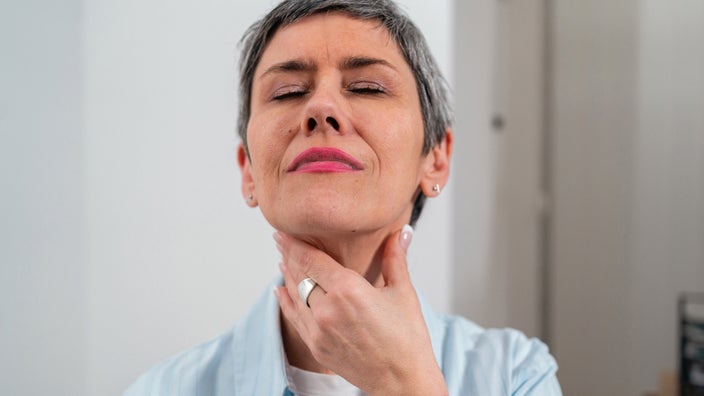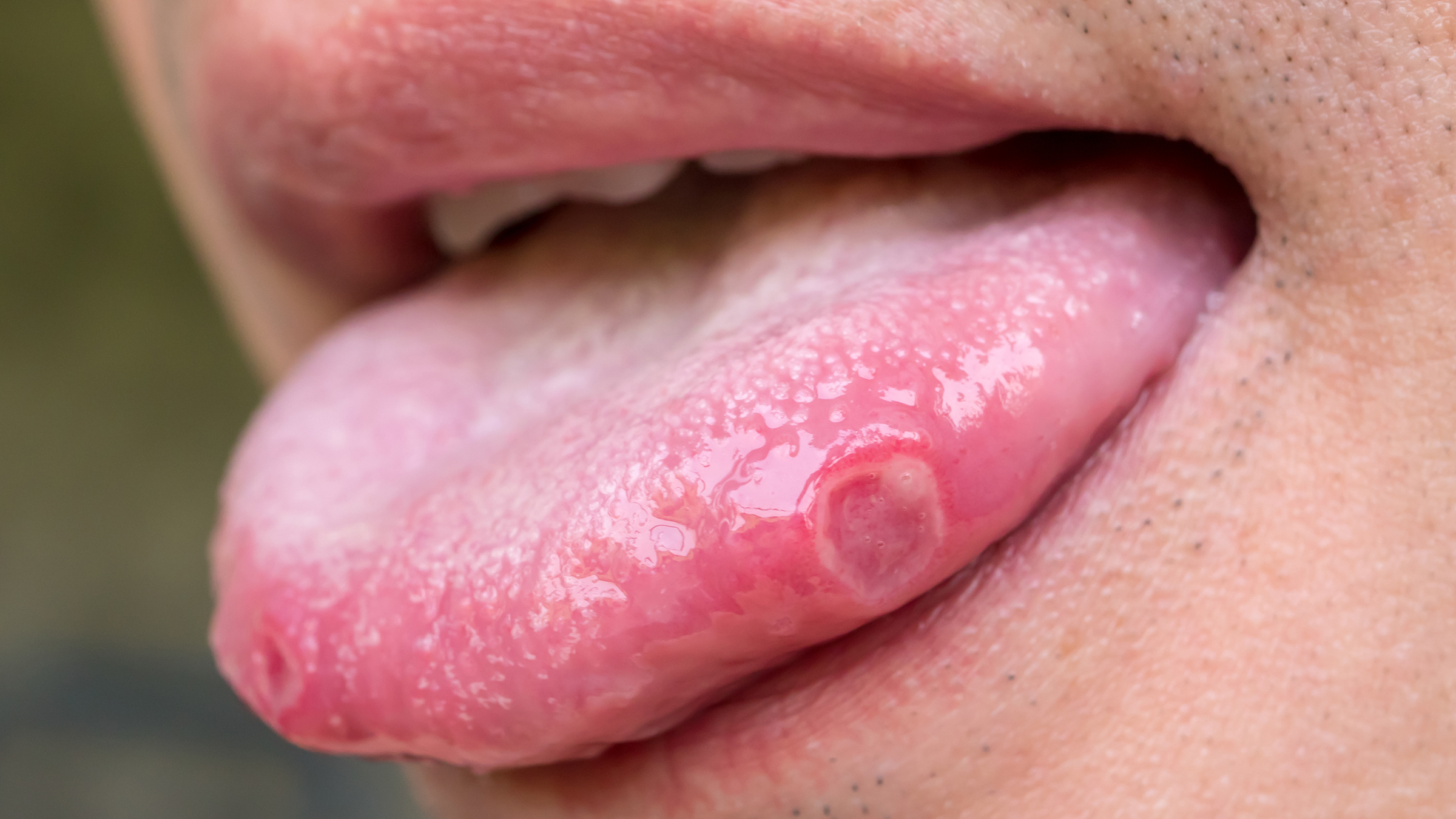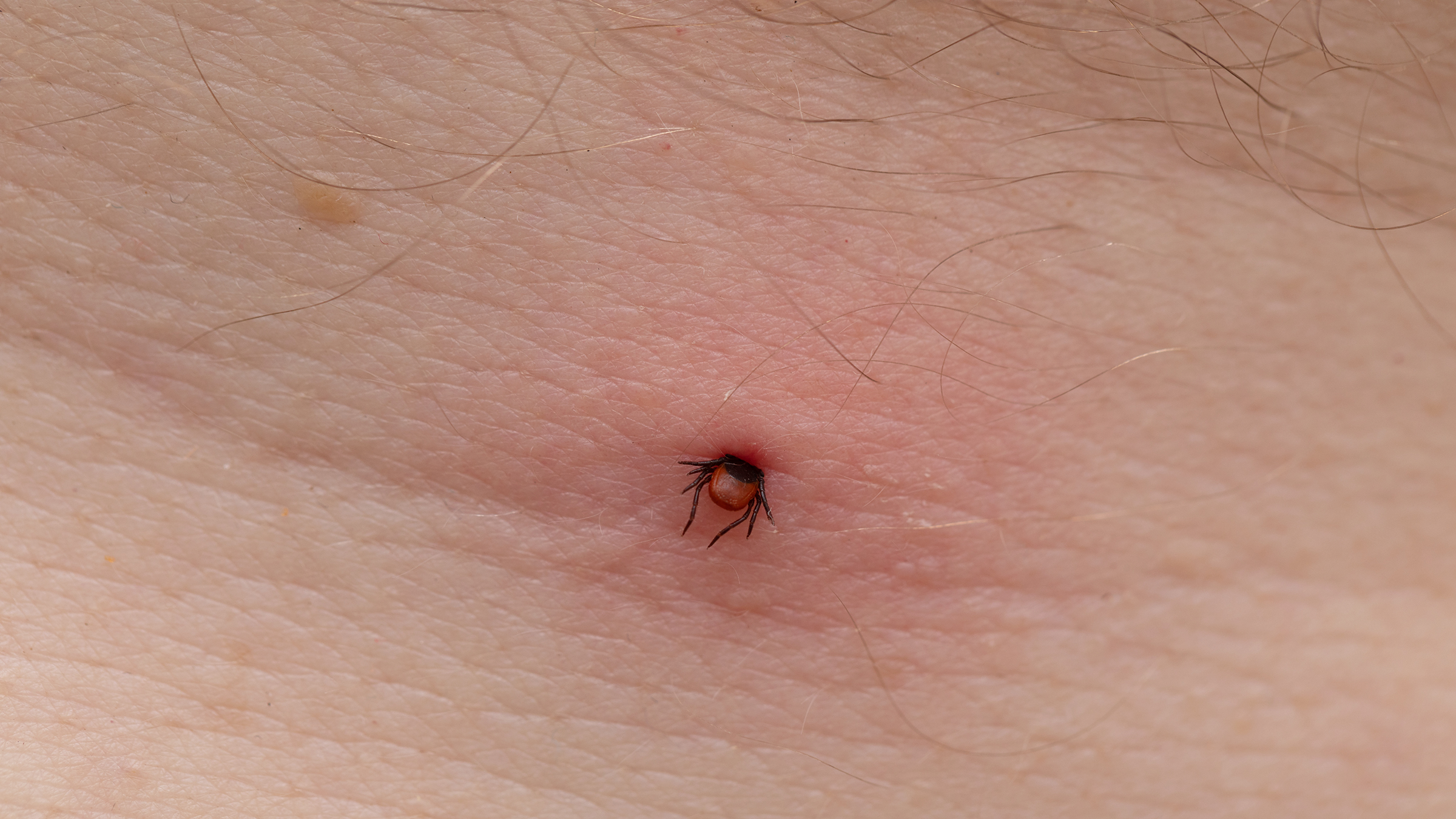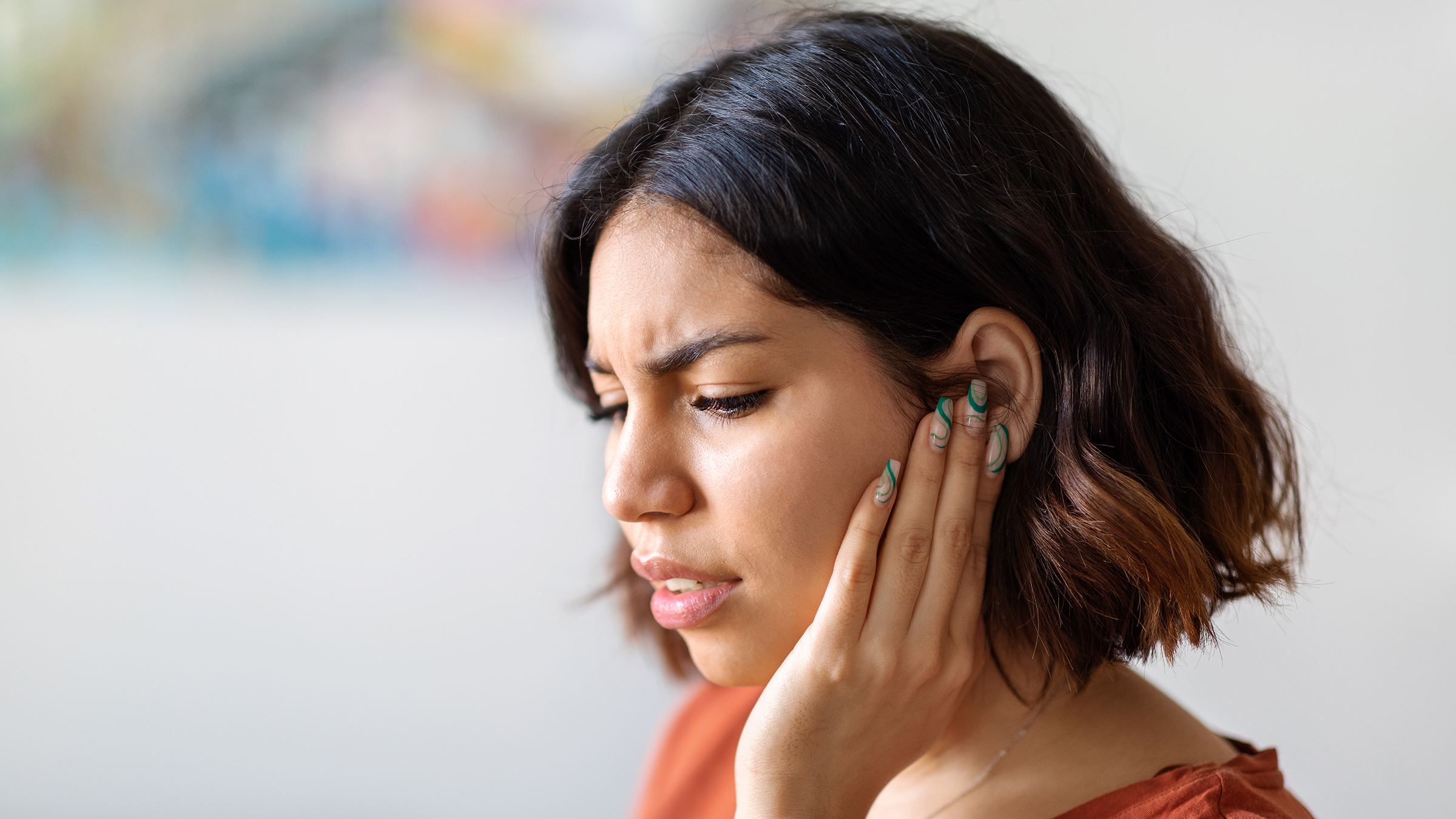
Swollen Lymph Nodes: Why They Happen and When to See a Healthcare Provider
Key takeaways:
Swollen lymph nodes are usually not a cause for concern. In fact, they are often a sign that your body is doing its job of fighting off illnesses.
A swollen lymph node that goes away on its own after a few days is most likely nothing to worry about.
See your healthcare provider right away if the swelling is accompanied by serious symptoms such as high fever, night sweats, or unexplained weight loss.

You may be concerned if you have swollen lymph nodes. But before you worry, bear in mind that this swelling can be a normal response. Indeed, it is often a sign that your immune system is working hard to fend off an illness.
Keep reading to find out what causes swollen lymph nodes, when to see your healthcare provider, and how they’re treated.
What are lymph nodes?
Lymph nodes are small, pea-sized glands that help the body recognize and fight infection. Your lymph nodes hold white blood cells (WBCs) that help rid your body of harmful germs that cause illness. Lymph nodes can be found in clusters throughout the body and are an important part of your immune system.
A normal lymph node is 1 cm in size or less and is not normally seen or felt in adults. But in children, it may be more easily detected.
It is estimated that your body houses several hundred lymph nodes. Some lie just below the surface of your skin, while others reside deeper within your body.
How do lymph nodes work?
Lymph nodes play a key role as filters in your lymphatic system. Your lymphatic system is made up of a broad network of vessels, tissues, and organs that are important to your immune system. This network allows lymph (a clear fluid filled with blood cells, fats, and proteins) to flow throughout the body.
As lymph runs its course in the body, it collects and traps harmful matter such as:
Bacteria
Body waste products
Parasites
Viruses
Lymph nodes work by filtering the lymph flowing through the lymphatic system. When your immune system recognizes germs or other foreign material, the WBCs in your lymph nodes get to work. The WBCs attack and remove any foreign substances that are detected. After this process, the filtered lymph fluid is released back into your bloodstream.
Swelling may occur as these germs, lymph, and WBCs build up within your lymph nodes. A lymph node that is greater than 1 cm in size can be considered swollen or enlarged. The medical term for a swollen lymph node is lymphadenopathy.
WHAT TO READ NEXT
What causes swollen lymph nodes?
Swollen lymph nodes (lymphadenopathy) can be caused by many things ranging from mild infections to serious illnesses like autoimmune diseases and cancer. The location of the swollen lymph nodes, and any other symptoms, can help to determine the cause.
In many cases, the swelling takes place at or near the area of the body that is affected. For instance, the lymph nodes in your neck may feel swollen when you have a sore throat, or an upper respiratory tract infection.
Sometimes, people have swollen lymph nodes in multiple areas of the body. This is called generalized lymphadenopathy and is sometimes seen in more serious illnesses.
Infections
Infections are the most common cause of lymph node swelling. Mild infections generally cause swollen lymph nodes in the area of the infection. Examples of these infections include:
More serious infections can cause generalized lymph node swelling along with other symptoms. Examples of these infections include:
Sexually transmitted infection such as syphilis
Cancer
Cancer is a less common cause of swollen lymph nodes. Examples of cancers that cause lymph node swelling include:
Kaposi’s sarcoma (cancer of the blood vessels or lymph vessels)
Leukemia (cancer of the blood cells)
There are also cancers of the lymph nodes. These are called lymphomas. There are different types of lymphomas including:
Lymphomas can cause swollen lymph nodes in the neck, armpit, collarbone area, and groin.
Autoimmune disease
Autoimmune diseases can cause lymph node swelling, too. Usually, the lymph node swelling in autoimmune diseases is in multiple areas of the body.
Examples of autoimmune diseases that can cause swollen lymph nodes are:
Medications
In rare cases, vaccines, certain medications, or an allergic reaction to a medication can trigger lymph node swelling. Common vaccines and medications known to cause swelling include:
Notify your healthcare provider if you have recently started a new medication and are concerned that your lymph nodes are swollen.
Can allergies cause swollen lymph nodes?
Allergies don’t typically cause swollen lymph nodes. If you have a runny nose and swollen lymph nodes, it is more likely due to an infection, not allergies.
How to tell if your lymph nodes are swollen
You can’t see or feel normal-sized lymph nodes. So, if you notice them, it’s likely that they are bigger than they should be.
You’re more likely to notice enlarged lymph nodes in places where the lymph nodes are near to the skin. Enlarged lymph nodes deeper in your body are not so easily felt.
What do swollen lymph nodes feel like?
Swollen lymph nodes can be painless. If they are inflamed or infected (something called lymphadenitis) they may be painful to touch. And the surrounding skin may feel warm.
What do swollen lymph nodes look like?
Enlarged lymph nodes may be difficult to see if you don’t know what you’re looking for. If they’re very large, then you may notice a lump. If there are several swollen nodes, you may see a cluster. If they’re not as large but still swollen, you might just notice a fullness where there didn’t used to be one.
Depending on the cause, you may also see skin changes around the lump. There might be redness, or there could be an opening in the skin, like a wound. Or even pus.
Where to look for swollen lymph nodes
Most people notice enlarged lymph nodes in:
Their armpits
The underside of their jaw
Above their collarbone
Their groin area
Other symptoms of enlarged lymph nodes
When the cause of swollen lymph nodes is unclear, other symptoms may help point to the source. For instance:
Joint pain, muscle weakness, or rash may indicate an autoimmune disease
Fever, chills, fatigue, and feeling unwell in general may suggest an infection
Fever, night sweats, and unexplained weight loss could indicate a serious infection, or cancer.
When to see a healthcare provider
Swollen lymph nodes usually resolve on their own. See your healthcare provider if your lymph nodes remain swollen for more than a few weeks.
Sometimes, though, you may need to have your lymph node swelling evaluated sooner. Notify your provider if your swollen lymph nodes have any of the following signs:
Hard or rubbery
Red and tender
Located in the area just above the collarbone
Fixed in place instead of rolling underneath the fingers
Larger than 1 cm in diameter in adults or 3 cm in children
You also want to notify your provider if the lymph node swelling is accompanied by:
High fevers that persist or recur
Stomach pain that persists or recurs
Unexplained weight loss
Drenching night sweats
The bottom line
Swollen lymph nodes can stem from a wide array of health conditions. They are usually a symptom of an infection, but in rare cases they can be caused by other health issues such as an autoimmune disease or cancer.
Lymph node swelling will usually get better on its own. However, it’s best to get evaluated by your healthcare provider if the swelling lasts for more than a few weeks or you have symptoms such as high fever, stomach pain, or night sweats.
References
American Cancer Society. (n.d.). Lymphoma.
Cipe, G., et al. (2011). Clinically positive axillary lymphadenopathy may lead to false diagnosis of overstaged breast cancer in patients with Sjögren's syndrome: A case report. Journal of Breast Cancer.
Dulin, M. F., et al. (2008). Management of cervical lymphadenitis in children. American Family Physician.
Freeman, A. M., et al. (2021). Adenopathy. StatPearls.
Gaddey, H. L., et al. (2016). Unexplained lymphadenopathy: Evaluation and differential diagnosis. American Family Physician.
Gowani, F., et al. (2018). Drug-induced hypersensitivity syndrome: A clinical, radiologic, and histologic mimic of lymphoma. Case Reports in Hematology.
Keshavarz, P., et al. (2021). Lymphadenopathy following COVID-19 vaccination: Imaging findings review. Academic Radiology.
Maini, R., et al. (2021). Lymphadenopathy. StatPearls.
MedlinePlus. (2019). Lymphadenitis.
MedlinePlus. (2020). Lymph system.
MedlinePlus. (2020). Staphylococcal infections.
MedlinePlus. (2020). Swollen lymph nodes.
MedlinePlus. (2021). Tonsillitis.
MedlinePlus. (2022). Immune system and disorders.
National Cancer Institute. (n.d.). Lymphatic system.
Veenbergen, S., et al. (2021). Autoantibodies in Sjögren's syndrome and its classification criteria. Journal of Translational Autoimmunity.
Wise, S. K., et al. (2018). International consensus statement on allergy and rhinology: Allergic rhinitis. International Forum of Allergy & Rhinology.
Zoubeidi, H., et al. (2016). Kaposi’s sarcoma presenting as lymphadenopathy in an immunocompetent patient. European Journal of Case Reports in Internal Medicine.





